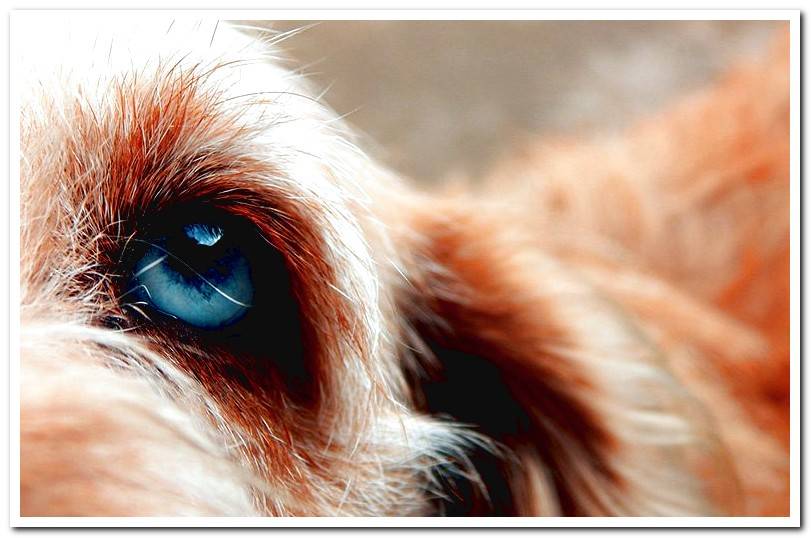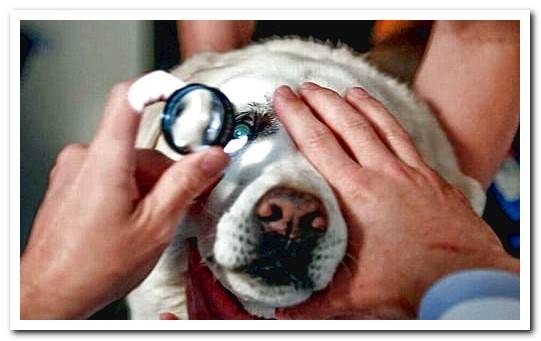
Our furry friends can suffer from various diseases and conditions of the eyes throughout their lives. One of them is canine uveitis, which we are going to talk about long and hard in this Dogsis article.
First, we will have to define what the uvea is and what are the causes that cause this part of the eye to become inflamed.
After talking about the symptoms of canine uveitis, we will finish explaining which is the most recommended treatment by specialists. Do you think it’s OK? Well, let’s go there.
Index of contents
- 1 What is the canine uvea?
- 2 Causes of uveitis in dogs
- 3 Main symptoms of uveitis in dogs
- 4 How is canine uveitis diagnosed?
- 5 Treatment of uveitis in dogs
What is the canine uvea?
To understand what uveitis is, it is important to know first what is the uvea in dogs, also called a vascular tunic.
This is the middle layer of the eye, where important structures for vision are found. When any of them becomes inflamed, an anterior or posterior uveitis occurs, depending on the part or segment of the uvea that is affected.
This can happen for many reasons. Do you want to know what they are? Let’s see.

Causes of uveitis in dogs
The causes that can cause uveitis in dogs can be distinguished into internal or external causes. Some of the most common are:
- Traumatic uveitis due to a strong blow to the eye.
- For ulcers on the cornea. If deep, ulcers can cause acute uveitis.
- Uveitis induced, by breakage of the lens or by cataracts.
- Due to clotting problems.
- Metabolic uveitis, caused by some diseases such as diabetes.
- Neoplastic uveitis, which is caused by tumors.
- Those caused by high blood pressure.
- Uveitis due to bacterial or viral infection. Two of the most frequent are the distemper and that of canine hepatitis.
- Uveitis can also be caused by parasites.
- Uveitis due to algae and fungi, although these are not very frequent.
As you can see, the range of causes of uveitis in dogs is very wide. In fact, some drugs can also cause it and there are immune factors that make certain breeds of Nordic dogs more predisposed.
Be that as it may, how can we realize that our furry friend’s health is compromised? The answer is: being aware of your symptoms so they can treat you as soon as possible.
We must also be careful not to confuse this disease with the canine entropion It can show similar symptoms at the beginning.

Main symptoms of uveitis in dogs
When a dog suffers from uveitis, it will be listless and without appetite. These symptoms are general and tell us that something is wrong. The specific signs that can make us suspect that it is an inflammation in the middle layer of the eye are:
- Close your eyelids from pain
- Tearing excessively
- His eyes are very red
- Pupil looks small or closed
- Light bothers you (photophobia)
- The eye takes on a blue or gray hue.
- There is pus or blood inside the eye, depending on the phase of the uveitis.
All of this can affect the quality of your vision. On the other hand, uveitis in dogs can occur in one or both eyes. In any case, to avoid major complications, it is important that we be vigilant and that, if we detect any of these signs, we visit a vet soon.
How is canine uveitis diagnosed?
When you are in the consultation, it is important that you indicate to the professional all the relevant changes and symptoms that you have observed in the dog. These data will guide the veterinaryn and, together with the complementary tests, will allow a diagnosis to be made.
These tests will normally consist of a complete eye exam with a device called an ophthalmoscope. A specialist may also want to perform an eye ultrasound, x-rays, and blood tests to rule out other diseases.
Treatment of uveitis in dogs
Once uveitis has been confirmed in the dog, the expert will indicate which is the most appropriate treatment. Depending on the type of uveitis you are and the phase you are in, you can prescribe various anti-inflammatory drugs, antibiotics or to eliminate pain or the cause of this condition. In some cases, surgery may be recommended.
If the dog with uveitis is treated early, it is highly likely that it will recover. That is why it is important that when we see that his eyes are red, we do not wait at home or attend to him without consulting a professional, waiting for it to happen.
You should know that early detection is key to avoid complications, since uveitis can cause serious problems, such as blindness, chronic pain, cataracts or even eye loss. In these cases, time plays against us and it is a common mistake to confuse mild uveitis in dogs with minor conjunctivitis. So you know, watch out for the symptoms and don’t risk it. As popular wisdom says: prevention is better …
